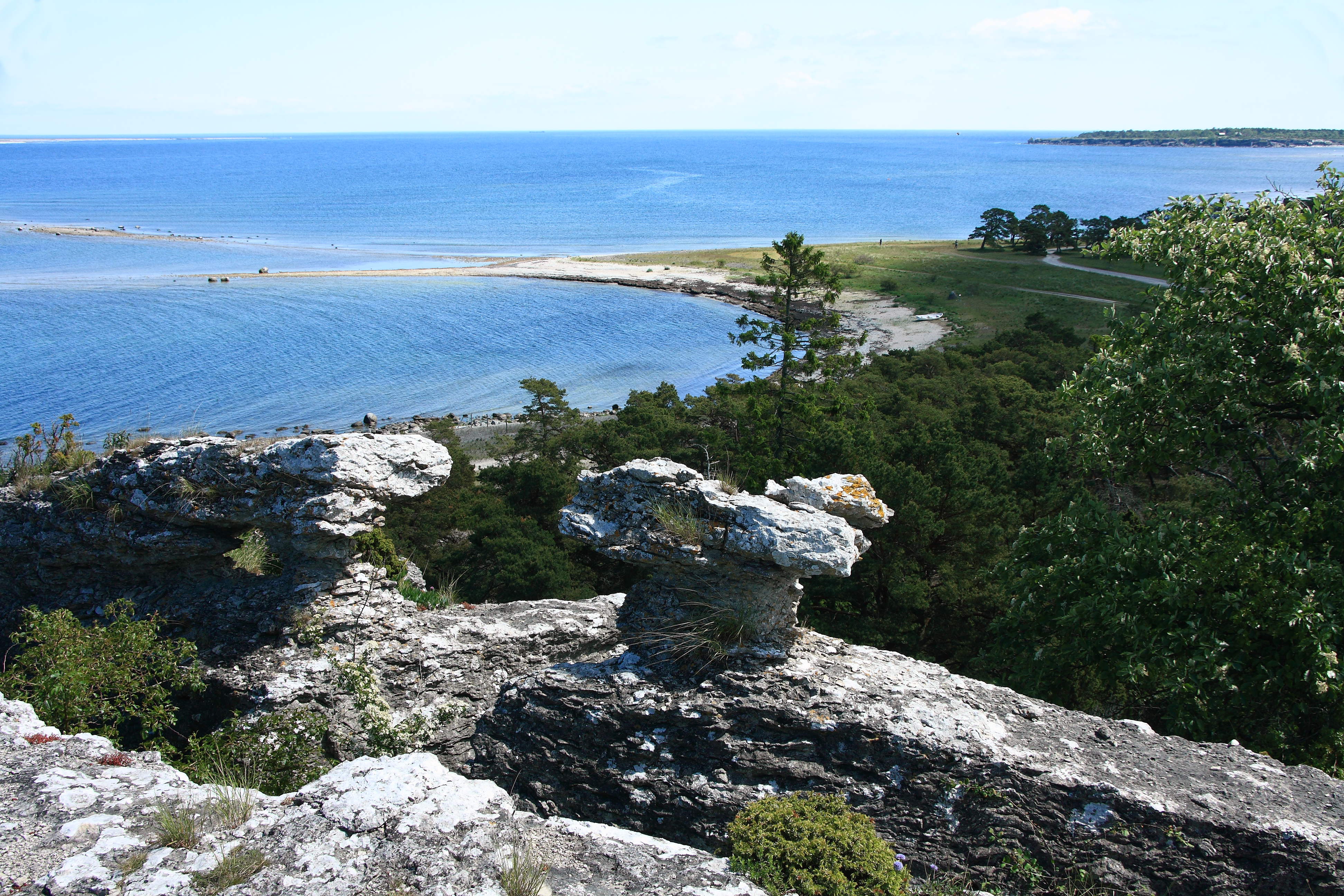Grogarnsberget (17) on:
[Wikipedia]
[Google]
[Amazon]
Grogarnsberget or Grogarnsberg (lit. "The Grogarn Mountain" more appropriate "Grogarn Hill") is a plateau hill on the Ă–stergarn coast, on the Swedish island of
 The castle, or fort, was built on Grogarnshuvud ("The Grogarn Head"), the northern tip of Grogarnsberget. The high sea cliffs provided protection on three sides. In the south there were two long stone walls with
The castle, or fort, was built on Grogarnshuvud ("The Grogarn Head"), the northern tip of Grogarnsberget. The high sea cliffs provided protection on three sides. In the south there were two long stone walls with
Gotland
Gotland (, ; ''Gutland'' in Gutnish), also historically spelled Gottland or Gothland (), is Sweden's largest island. It is also a province, county, municipality, and diocese. The province includes the islands of Fårö and Gotska Sandön to the ...
. On the hill are the remains of former hillfort, the second largest on Gotland and the fourth largest in Scandinavia.
Geography
The hill is on the northeast coast of the most eastern part of Gotland. It is approximately high with steep cliffs on three sides. The hill provides a good view of Ă–stergarnsholm with its twolighthouse
A lighthouse is a tower, building, or other type of physical structure designed to emit light from a system of lamps and lenses and to serve as a beacon for navigational aid, for maritime pilots at sea or on inland waterways.
Lighthouses mar ...
s. In the west, east and south are the historic harbors Katthammarsvik
Katthammarsvik () is a harbour settlement in Östergarn ''socken'' on the island of Gotland, Sweden. As of 2005, it was in statistical terms defined as a '' småort'' (small locality) and has formerly, very briefly, held the status of a '' tätor ...
, Herrvik, and Sandviken, formerly starting points for journeys across the Baltic Sea to the Baltic.
The Grogarnsberget is also a nature reserve and it is designated a Natura 2000
Natura 2000 is a network of nature protection areas in the territory of the European Union. It is made up of Special Areas of Conservation and Special Protection Areas designated under the Habitats Directive and the Birds Directive, respectively ...
area. Established in 2007, it covers .
Hillfort
palisade
A palisade, sometimes called a stakewall or a paling, is typically a fence or defensive wall made from iron or wooden stakes, or tree trunks, and used as a defensive structure or enclosure. Palisades can form a stockade.
Etymology
''Palisade' ...
s. From the site of the former castle, other major hillforts in the region are visible. Archaeological investigations of the outer ramparts turned up arrowheads from the late Vendel Period (550-800 AD), which provided a clue as to the dating of the castle.Aleksander Loit (ed.):'' The contacts between the eastern Baltic and Scandinavia in the Early Middle Ages. International Conference, 23–25 October 1990, Riga.'' Centre for Baltic Studies, Stockholm 1992, , p be 53 A number of wooden posts were also found, probably formerly part of the palisades, that were dated to 740 AD. The fort had both an outer and an inner wall.
There are 82 such forts known on Gotland. Most of them has an interior surface of less than . The one on Grogarnsberget, however, measures (), making it one of the two largest hillforts on the island. House foundations from the Roman Iron Age – the Migration Period
The Migration Period was a period in European history marked by large-scale migrations that saw the fall of the Western Roman Empire and subsequent settlement of its former territories by various tribes, and the establishment of the post-Roman ...
– were found inside the fortifications, unlike any other hillforts on the island.
The largest hillfort in Scandinavia is Halleberg in Västergötland, Sweden at about , the second largest is Lollands Österborg on east Lolland
Lolland (; formerly spelled ''Laaland'', literally "low land") is the fourth largest island of Denmark, with an area of . Located in the Baltic Sea, it is part of Region Sjælland (Region Zealand). As of 1 January 2022, it has 57,618 inhabitant ...
, Denmark at about and the third largest is Torsburgen
Torsburgen, Tors borg or ''þors borg'' ("Thor's fort/castle") are the remains of an ancient hillfort in Kräklingbo on the Swedish island of Gotland in the Baltic Sea. The fort is approximately , was constructed in the 1st-4th century and in use ...
on Gotland
Gotland (, ; ''Gutland'' in Gutnish), also historically spelled Gottland or Gothland (), is Sweden's largest island. It is also a province, county, municipality, and diocese. The province includes the islands of Fårö and Gotska Sandön to the ...
, Sweden at about .
References
Bibliography
*External links
* {{Gotland County Nature reserves in Sweden Geography of Gotland County Natura 2000 in Sweden Migration Period Hill forts in Sweden Buildings and structures in Gotland County Vendel Period Ruined castles in Sweden